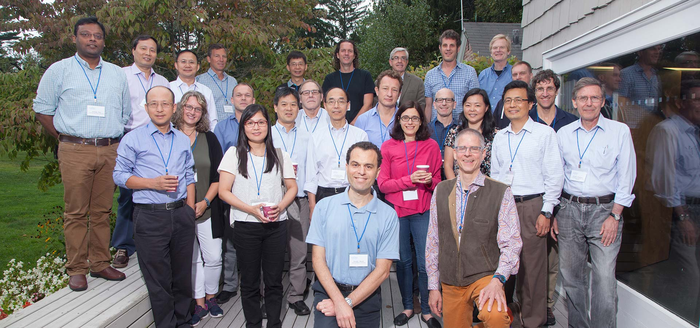In 2013, the U.S. government began investing $100 million to decipher how the human brain works in a collaborative project called the BRAIN Initiative. Cold Spring Harbor Laboratory (CSHL) and other researchers built tools and set standards for describing all the cells in the brain. On October 7, 2021 the initiative reached a major milestone, publishing a comprehensive census of cell types in the mouse, monkey, and human primary motor cortex in Nature.

Credit: CSHL
In 2013, the U.S. government began investing $100 million to decipher how the human brain works in a collaborative project called the BRAIN Initiative. Cold Spring Harbor Laboratory (CSHL) and other researchers built tools and set standards for describing all the cells in the brain. On October 7, 2021 the initiative reached a major milestone, publishing a comprehensive census of cell types in the mouse, monkey, and human primary motor cortex in Nature.
The BRAIN Initiative Cell Census Network (BICCN) is the consortium of neuroscientists, computational scientists, physicists, geneticists, and instrument makers within the BRAIN Initiative tasked with counting and mapping all the cells in the brain.
Z. Josh Huang, an adjunct professor at CSHL, leads one branch of the BICCN that includes five principal investigators from CSHL and researchers from other institutions. His lab outlined ways to classify new cell subtypes within the mouse forebrain based on their shapes, connections, and the genes they use.
CSHL Professor Partha Mitra and other CSHL collaborators taught a computer to recognize different parts of neurons, then mapped the cells onto a topological world to see how those neurons are likely to connect.
CSHL Associate Professor Jesse Gillis’ lab developed a statistics-based computer tool to categorize cells based on similarities in their component parts. This program, called MetaNeighbor, uses RNA transcripts (the instructions to build the components) to compare and categorize mammalian brain cells.
CSHL Professor Anthony Zador’s lab developed MAPseq to map how different brain cells connect and interact. Several years later, Zador and his team developed BARseq and BARseq2, which can map connections and gene-use in thousands of neurons in a single mouse at single-neuron resolution.
CSHL Associate Professor Pavel Osten leads another branch of the BICCN dedicated to finding anatomical differences between female and male mouse brains. He and his lab developed qBrain, a method that combines brain imaging techniques to map cells and connections of the mouse primary motor cortex in three dimensions.
The atlases and catalogs published by the BICCN so far are frameworks upon which neuroscientists can now build. Neuroanatomists will be able to compare the human brain to the brains of other species. The BICCN scientists hope that within the next ten years, thousands of human brains will be mapped. This knowledge could be harnessed to study and treat schizophrenia, depression, Alzheimer’s, and traumatic brain injuries, and will be revolutionary to the future of neuroscience as a whole.
Journal
Nature
DOI
10.1038/s41586-021-03465-8
Article Title
Comparative cellular analysis of motor cortex in human, marmoset and mouse
Article Publication Date
6-Oct-2021




